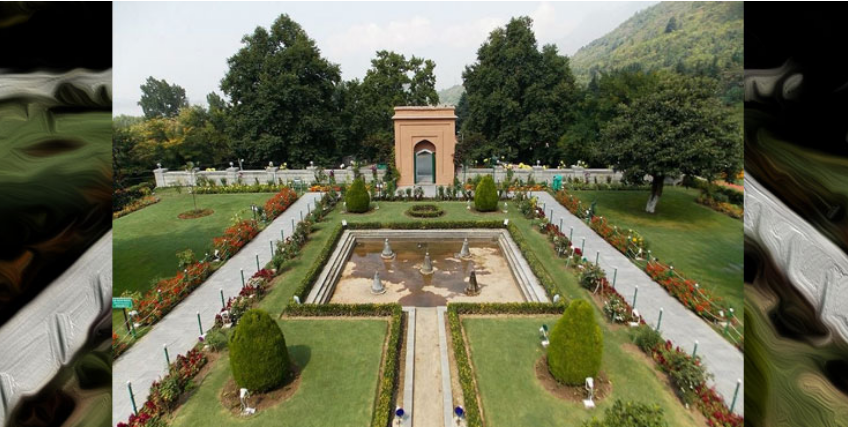Mughal Rule In Kashmir

In 1586, Mughal Badshah Akbar took control of Kashmir and included it in his seat of Afghanistan Subah, the first time Kashmir had experienced direct Mughal rule.
According to Shah Jahan, it was a distinct subah (imperial top-ranking province) with its capital at Srinagar. It was under the Mughal rulers that several renowned gardens, mosques, and palaces were constructed. The Mughal emperor Aurangzeb restored unfair taxes in 1658 CE. Mughal influence decreased after his death.
Kashmir under the Mughals (1580-1750)
Kashmir became one of their top priorities as soon as they began to control India in 1526. Babur made a small attempt in 1528 to establish the Mughal Dynasty. It was the army that succeeded in 1586. A land collapse occurred on 6 October.
As a result, the military did not have an easy time seizing the area. The Kashmiris fought against the rapacious kings between 1528 and 1586, and they used their political savvy to drive the enemy out of the Valley after it had settled there.
The Mughals made several fruitless attempts to take it before attacking it in 1586 AD. A fierce opposition frequently forced the Mughal armies to retreat when they attempted to invade the Muslim part. Mughals first attempted to capture Kashmir in 1528 with Babur’s armies. Their presence resulted in widespread hostility. Mughal soldiers were dispatched once more after receiving gifts.
It was Humayun who invaded Kashmir
After Babur, Humayun couldn’t hold off the guerilla tactics of the Kashmiri forces, who ambushed him in Srinagar and caused them significant losses. Peace talks were initiated by Mughlian troops and an agreement was reached.
They tried again in 1533. Mirza Haider Doghlat’s army passed through Zojlia. As soon as the Kashmiris overcame their initial shock of defeat, they began to form resistance. In addition to hindering the hostile forces, they held on to them and held them off. As a result, Doghlat’s advisor Ali Taghai advised him to leave those parts of the subcontinent since taking them over would be difficult. Per an agreement negotiated between the two sides, the soldiers departed Kashmir along the same path they had entered the Valley.
Army of the Mughals retreats
The valley was conquered by Doghlat in 1540. A number of battles were fought with the enemy by the Kashmiri once they re-emerged. During the battle at Mankot near Poonch in 1551, the Mughals were forced to flee, but many were killed and their luggage confiscated. Despite being captured, most of the soldiers of Qara Bahadur’s garrison fled the battlefield. Towards Srinagar, Kashmiri resistance leader Idi Raina has advanced. The central part of the country was later attacked by Doghlat, who was killed in Khampur.
In response to his widow’s efforts, Doghlat’s family and followers were sent to Kashghar via Pakhli and Kabul.
In the year following the death of Doghlat, Afghan military leader Haibat Khan Niazi marched to a geographical area but was defeated and killed by Idi Raina along with several of his chieftains.
Akbar couldn’t comprehend Jammu as a freelance country in his neighborhood. His first incursion into the depression was in 1560, but since he didn’t receive support from some Kashmiri nobles, they could not advance beyond Rajouri. Under Kaji Chak, Kashmiri troops attacked the Mongolian soldiers and defeated them. To collect the award, 700 heads of Mughal troopers were dropped. There were cases where the reward was multiplied five times.
As a result of the revolt, Yusuf Shah Chak abdicated the throne within two months of his coronation. During his visit to Agra in 1580, he requested Akbar’s help in regaining his crown. Yusuf Shah Chak and Raja Man Singh were sent by Akbar with his troops. As a result of Yusuf’s leadership, he was able to reclaim his throne alone.
Despite Akbar’s requests for Yusuf to appear in person three times in court, he refused to do so on his adviser’s advice. The father sent his son with a present to Akbar. In an attempt to conquer that land, Akbar sent an army of 5,000 men. In order to prepare for the defense, Yusuf was forced to satisfy Akbar. They refused to comply. As a result of bad weather, a lack of food, and strong resistance from the troops, the army was unable to make any progress. Yousuf was asked by Bhagwan Dass to appear in front of the king. In February 1586, the nobles again advised Yusuf not to take such action, but the mad king betrayed them and fled to the Mongol camps.
An attack by Akbar’s armed forces on the area was met with solid resistance, and he suffered severe beatings at various points. It is estimated that over 300 soldiers were lost in a battle at Gusu and over 1,500 in another at Hanjik. Akbar sent support to Qasim Khan, the commander of the armed forces, after he requested Akbar to call him back. As a result, the Mughal armed force was able to add that on 6 October 1586.
In Kashmir, flexibility was a source of astonishment and hardship. As a force of occupation, Mughal officers were despised by Kashmiris, and numerous revolts took place among troopers and Kashmiris.
A few capable Muslim families were pulled down from tall platforms, including the Shah Mirs, Chaks, Magres, Raina’s, Maliks, and Bhats.
